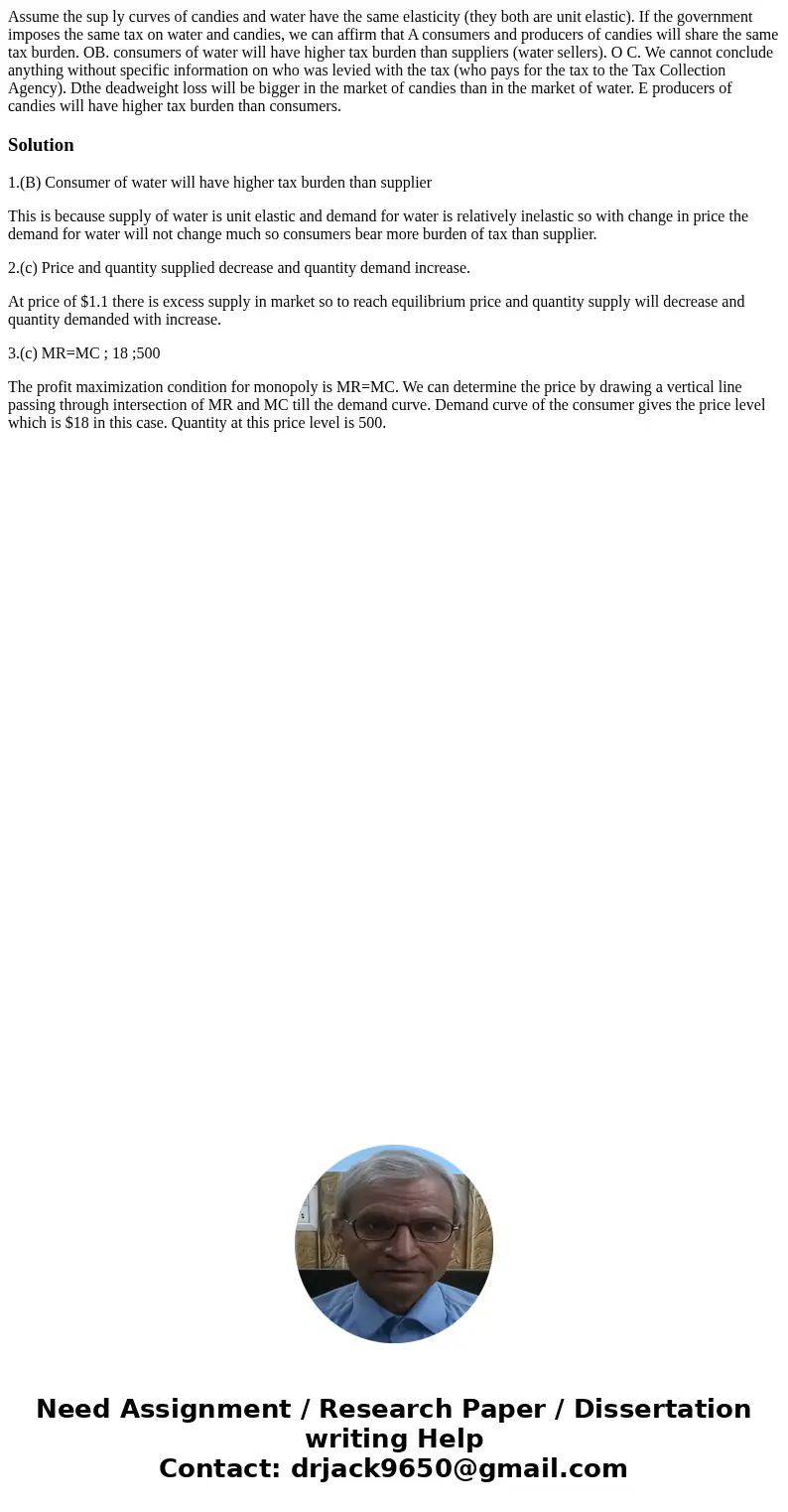Assume the sup ly curves of candies and water have the same
Solution
1.(B) Consumer of water will have higher tax burden than supplier
This is because supply of water is unit elastic and demand for water is relatively inelastic so with change in price the demand for water will not change much so consumers bear more burden of tax than supplier.
2.(c) Price and quantity supplied decrease and quantity demand increase.
At price of $1.1 there is excess supply in market so to reach equilibrium price and quantity supply will decrease and quantity demanded with increase.
3.(c) MR=MC ; 18 ;500
The profit maximization condition for monopoly is MR=MC. We can determine the price by drawing a vertical line passing through intersection of MR and MC till the demand curve. Demand curve of the consumer gives the price level which is $18 in this case. Quantity at this price level is 500.

 Homework Sourse
Homework Sourse